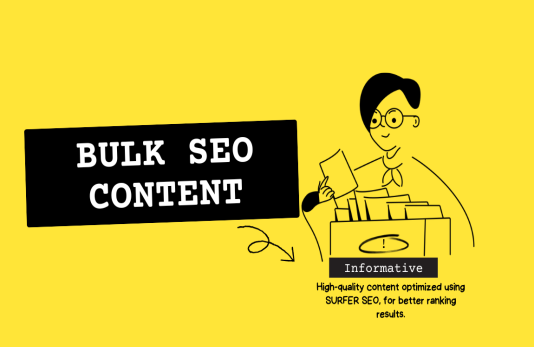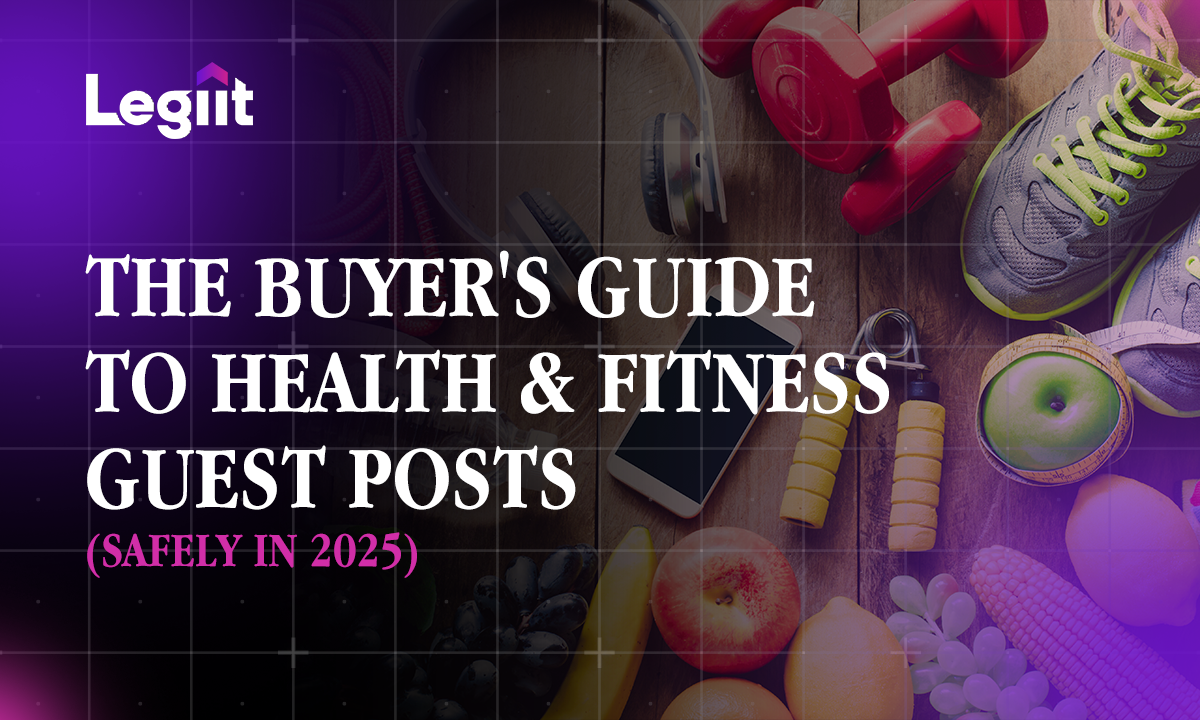When it comes to copywriting, two things are clear. One is that content is still king, and this is unlikely to change soon.
The second is that audiences have a shorter attention span than ever before. So much so that over 50% of page views only get a few seconds of attention from readers. This is a nightmare for internet marketers.
Readers today skim more than they read. And this makes sense, considering all the new content being out every day. Still, you need to attract traffic to your site and maximize lead generation and conversions. So how do the best copywriters and advertisers get this done? Here is how.
1. You Never Go Wrong With Research

Your audiences are intelligent people. As such, they will flag inaccuracies pretty quickly. To get around this, do your research.
All great copywriters and advertisers speak to the value of research. David Ogilvy, the British advertising tycoon, popularly referred to as the father of advertising, has some excellent copywriting tips in relation to this.
‘’Stuff your conscious mind with information’’ so you have plenty to work with.
Legendary copywriter Gary Bencivenga who studies with Ogilvy and a host of other renowned copywriters, said;
‘’The best copywriters are the most tenacious researchers. Like miners, they dig, drill, dynamite, and chip until they have carloads of valuable ore. John Caples advised me once to get seven times more interesting information than I could possibly use. Research is the infallible cure for writer's block. ''
More information offers you more possibilities and angles you have to play with. It also provides you with accurate, factual information for your blog post. This makes your site more authoritative and helps you win your customer's trust. It's a win-win.
2. Deliver A Powerful Punch With Your Call To Action
They say ask, and it shall be given. Well, this simple analogy works pretty well in copywriting. Essentially, if you don't specifically ask people to do something, there is a likelihood that they won't do it. This tip can significantly elevate your copywriting skills.
This makes a CTA one of the fundamental parts of any copy. For your copy to perform well, you need to include a CTA that tells people what to do invitingly and efficiently.
This seems overly simplistic on the face of it. However, if you avoid telling people what actions to take next, they are unlikely to take any action. A compelling CTA helps drive the engagement you want and provides readers with something to think about after reading the copy.
Your emails, blogs, social media posts, landing pages, and so on should have a CTA.
Good CTA’s:
- Have a value proposition
- Use actionable language on your blog post, email and other copy
- Match the buyer person and stage of the buying cycle
- Offer prospects something they actually want
- Utilize time-sensitive language; a good example of this is 'get it now' converts better than 'click here. The same goes for CTA's with tags like;
Ø Start your free trial today
Ø Call us for a free quote today
Ø Save 20%...
Ø Sign up today
Ø Buy now and get…
3. Establish Your Credibility and Authority
Steve Slaunwhite, an exceptional copywriter, said this on copywriting and credibility.
‘’In my experience, the number one key to persuasion is this: communicate trust. If you do this well, you at least have a chance at engaging and persuading the reader. However, if you do not do this well, no amount of fancy copywriting techniques will save you. ‘’
The person selling a product matters a lot to customers. As such, people want to buy from brands that are excellent at what they do.
They want companies that excel at reliability and consistency and that are highly passionate about what they do.
If you can show your credibility, authority, and heavy investment in your brand, you are a step closer to nudging them towards a purchase.
To establish Authority:
- Mention awards, features, and highlights
- Mention accomplishments that showcase your expertise
- Mention authoritative brands you have worked or partnered with
To establish credibility:
- Highlight social proof
- Detail customer success stories
- Cite metrics
To establish your investment:
- Talk about your mission and the passion that drives the business
- Outline the problem you solve
4. Pack A Piece With Interest
When unsure about what to write next or how to improve a draft, make it enjoyable. You do this by:
- Make it scannable and visually appealing
- Let your persona and unique selling proposition shine through the copy
- Use humor to make it entertaining when appropriate
- Tell stories and anecdotes
- Inject controversy
5. Show your Personality

Every brand has an image and personality. Copy brings these to life.
Over time, you want your customers to recognize and identify with your brand as a person.
Every writer has their own unique selling proposition, style, voice, copywriting technique and writing tone. Make sure these are captured on any copy before it's published and that you remain consistent and match your audience's needs and desires.
6. Go For The Bulls Eye With Your Headings
The most brilliant blog posts will get no attention if the headline misses the mark. Unfortunately, 80% of readers do not make it past the headline.
Here are some tips from top copywriters on advertisers to help you get your headline right each time.
- Work on the copy, then determine the best headlines to use. This helps ensure the content matches the headline.
- Irrespective of your copy writing technique, simple, straightforward headlines can be magical.
- Capture the 4 U’s: Unique, Urgent, Useful, Ultra specific
- Capture the reader’s attention by painting a clear picture or by provoking strong emotions
7. Keep Things Simple
This might seem like fishy writing advice. However, keeping your writing simple doesn't necessarily mean eliminating all jargon or dumbing things down. Instead, aim to write clearly and concisely to get your message across quickly, even on complex topics.
This allows your audience to relate and understand what you are offering much faster (remember the dwindling attention spans).
8. Make Content Scannable
On average, people remain on a page for 20 to 30 seconds. This is all the time you have to get their attention.
One way to do this is to make your text skimmable. Here are six practical ways to help you do this;
- Bold key benefits, facts, and sentences
- Use short sentences and paragraphs
- Use bullets and numbers
- Use images to break up text and
9. Work On The Aesthetics
Successful advertisers have one rule for copywriting: make it inviting to look at. If an ad is not visually appealing, people will not give it any attention.
With all the content we have online today, website visitors skim more than they read, and the attention spans of a goldfish, there are no two ways about this. Use a font that's large enough to read easily, apply visual cues, and have distinct headings and subheadings to help the reader find specific information more easily.
10. Keep A Portfolio
It happens to the best copywriters; one day, you are full of ideas, and the next day the well is dry. One thing that can ease you out of that rut is a portfolio of your best-written sales emails, blogs, and other content you have developed over the years.
If you get a tough headline or need to come up with an excellent post but are out of ideas, looking through your portfolio can side your creative juices.
11. Show, Don’t Just Tell
Human beings process images 60,000 times faster than they do text. This, in part, explains why networks like Snapchat, Pinterest, and Instagram enjoy the popularity they do.
It doesn't end with processing information. Adding images to information increases recall value by 65%. This is valuable to your marketing strategy. As you work on excellent written content, break it up and enhance it with relatable images that mesh with the written text.
12. Break Some Rules
The most common rule of copywriting is to stick strictly to proper English. Right? Well, not really.
Communicating to and with your audience becomes easier when you have a good handle on who your audience is. You are allowed to break some syntax, mechanics, and grammar to speak to your prospects in the most engaging way possible.
Write as you would speak to a friend. Take, for example, when a friend asks what you choose the particular vacuum cleaner you have at home. You are unlikely to say, ''This vacuum cleaner synchronizes efficiencies across my multi-storied floor design''.
Similarly, if a friend compliments your t-shirt, you are unlikely to say ‘’…it is enzyme washed’’.
This sentence is overly mechanical. If you would not speak this formally to a friend, do not write so formally either.
13. Minimize Distractions

At times, you get stuck in a rut because you lack inadequate time, not necessarily that you are out of words or ideas.
A writing method proposed by Eugene Schwartz worked surprisingly well for him (Schwartz was one of the highest-paid copywriters of his time), only requires an alarm clock. To get started, turn off your phone, email notifications, lock the door, and shut out any other distractions you face when working.
Then sit at your desk and set your timer for 33 minutes. During these 33 minutes, all you are allowed to do is think about the writing project, get around it, and work on it. When the time lapses, take a ten-minute break and set the timer for another 33 minutes.
14. Push The Envelope
Being too conformist and conservative in your copywriting can quickly get monotonous and boring to your audience. New, fresh, even seemingly outlandish ideas might be just what you need to take your brand to the next level.
Be open to trying new things, borrow concepts from dissenters and non-conformists and see how far you can push these.
15. Focus On Benefits
Think about buying an item. The main thing each time is how it benefits you, its usefulness, and the problem it solves for you. When you look at a product’s features, you do so while trying to link these to the benefits to be enjoyed.
All great copywriters advise writers to focus on benefits, not features. As such, talk about benefits and discuss what your product does, not what it is. Conversely, if you mention a feature, always tell the reader how it benefits them.
16. Ask Questions That Get ‘’yes’’ As An Answer
This is an everyday persuasion tactic used by car salesmen. The theory states that the more often you can get your prospects to say ''yes'', the likelier they are to say ''yes'' again.
In sales copy, you can place some strategic questions that you are sure prospects will say yes to or nod to. When this happens through a copy, you are much closer to making a sale.
17. Offer Something Right From The Start
We have already said something about headlines and how they need to capture the reader's attention.
Well, a headline's second job is to keep them reading. How? By making an honest promise. If you can promise something with your headline, don't miss the chance to do so. Examples of this are:
- The ultimate guide to copywriting
- The five most lucrative career pivot opportunities for health professionals
- How to craft a business plan in 7 simple steps
- Tips for writing the most captivating headlines
You get the gist.
There is nothing complicated about these headlines. They are simple, honest, solid, and reliable. Nothing clever. Sometimes, easy does it.
Of course, you have to fulfill the promise with some top-notch content.
18. Appeal To Emotions

The question, ''what is my prospect's deepest desire right now?'' will tell the emotion you need to explore.
There are numerous emotions you can appeal to in your copy. However, you need to go for the strongest, deepest emotions. These often don’t include rational thought. They include:
- Greed
- Guilt
- Fear
- Anger
- Exclusivity
- Flattery
- Salvation
19. Write In Active Voice
Active voice is stronger, shorter, and easier to understand than passive voice. On the other hand, passive voice sounds weak, acted upon, and reactive. When using active voice, the subject does an action instead of being acted upon. This is what makes active voice powerful and naturally much more interesting.
For example;
''We created this cookbook to help you become an exceptional cook.''
Vs.
‘’The new cookbook created by our company will help you become an exceptional cook.''
The first sentence, written in active voice, is easier to read and much shorter. Active voice can also begin a sentence with a command or verb. For example:
''Learn to make delightful meals with our new cookbook.''
Whichever option you go with is dependent on the context. However, either option is significantly better than a longer, winding sentence that buries the subject and the verb.
20. Eliminate Weasel Words
Weasel words are intentionally ambiguous statements. In copywriting, these are words that avoid a direct command. Essentially, a brand uses these words to avoid making a solid commitment and protect themselves somewhat.
Unfortunately, you come off as unreliable, flaky, and unlikely to deliver to the reader. For each copy, ensure to identify words like;
- Hope
- May
- Could
- Perhaps
- Might
Replace these with imperatives or promise words like;
- Do
- Can
- Will
Imperative or promise words make you sound more confident of your brand and its ability to hit the mark every time. When you sound confident, you earn your prospect’s trust.
21. Back Up Claims
Logic will influence buying decisions just as emotions do. It then makes sense that you will want to incorporate facts into your copy.
As you do this, keep in mind that today's audiences are more intelligent and more informed than they have ever been. As a result, you sound more authoritative and earn more trust when you back up your claims with reliable data.
Provide proof to back up what you say and the stated benefits. Showing your expertise on a topic is a sure way to win over skeptics. Ways to back up claims include:
- Facts and statistics
- Research data
- Testimonials
- Methodologies
- Success stories
- Case studies
- Provide links to credible sources
22. Leverage Examples
Examples help you illustrate points and bring key points closer home. This trick works for everything you write and helps you build credibility by making your writing more powerful.
With all the ambiguities in advertising, providing specific examples to illuminate what you are talking about is very refreshing. Of course, one way to go about this is using other people's stories.
These are paramount to the writing process as they expound on your point and make what you are discussing more relatable.
23. Balance Out Your ''You'' vs. ''We.''
Avoid making your copy about how impressive your organization is as tempting as it might be. Unfortunately, customers want to know that they are doing business with companies that care about meeting their needs and desires.
Effective content marketing is customer-centric. This is why copies that address the customer directly perform better than those that focus on an organization. Consider placing the bulk of your focus on your customer and how your offer solves their problems.
One way to do this is to ensure you use the word ‘’you’’ more than you use ‘’we’’. Using ''you'' twice as much as you do your brand name and ''we'' naturally aligns your focus with customers' needs. This seemingly minor tweak strengthens your copy and gets you more traffic and leads.
24. Include Elements of Persuasive Writing
One of America's rock star copywriters, Bob Bly, gives critical insights on what makes copywriting effective and why some ads make a lasting impression and convert, while theirs barely pay for themselves.
The answer? Persuasive writing elements. A successful advert;
- Gains attention
- Establishes credibility
- Focuses on the customer (‘’you’’ instead of ‘’we’’)
- Stresses benefits
- Builds value
- Differentiates you from your competition
- Proves its case
- It ends with a powerful Call To Action
Do not fuss too much about all the eight elements being proportional in one copy. Depending on the product, one or more points will be dominant over the others.
For example, a new brand will need to prove credibility. On the other hand, a well-established, trusted brand does not have to. Either way, having all points at your fingertips will help provide direction.
25. Have A Writing Copywriting Formula
You cannot mention writing formulas without mentioning AIDA-it’s just that good.
AIDA (Attention-Interest-Desire-Action) makes it easy to map out a copy. Close to this is John Caple’s version which has Attention-Interest-Action. Other copywriting formulas you can use as guides are:
PAS: Problem-Agitate-Solution. This works because people prefer to act to prevent pain than to feel the pain.
1-2-3-4-framework: this helps you be customer-focused and incorporate the most important persuasion fundamentals into your copy.
FAB: Features-Advantages-Benefits.
A FOREST: Alliteration-Facts-Opinions-Repetition-Examples-Statistics-Threes (repeat something thrice for maximum recall)
ACCA: Awareness-Comprehension-Conviction-Action
AICPBSAWN: Attention-Interest-Credibility-Prove-Benefits-Scarcity-Action-Warn-Now
26. Begin Each Project With An Objective
Just like you need to understand your target audience, you also need to understand what you are trying to accomplish.
Approaching copywriting as a passive discipline with vague goals is a sure way to fail. Instead, think of it as intentional, specific, and geared toward attaining specific results. For any copy to be compelling, you need clarity on these specific results. Don't put pen to paper without a clear understanding of this.
27. Copywriting Is Synonymous With Clarity

Persuasive copy is magical. So is clarity.
Part of clarity is covering all your bases. But unfortunately, it's extremely easy to forget about a critical piece of information while attempting to craft a narrative around other copywriting tips.
A simple way to get around this is to have all the information you need to deliver ahead of time. This is:
- What is the offer?
- Why does it matter?
- Where is it being offered?
- Who is it being offered to?
- How does it work?
Just like persuasion fundamentals, these points won't all apply to each copy all the time. Instead, look at them as a roadmap that ensures you have all the information you need.












 Download
Download